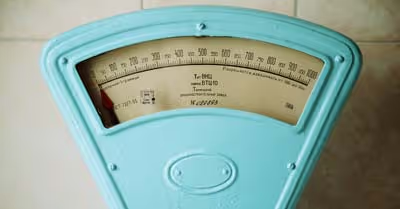Table of Contents
How Much Does a Dime Weigh?
Since 1965, the weight of a dime has been 0.07 ounces. The metal composition was modified to have a composition of 90% silver and 10% copper. The weight also increased to about 0.09 ounces. Due to growing silver prices, this weight was lowered to about 0.08 ounces between 1853-55. The dime is the lightest and smallest coin used in the US, weighing even less than a penny.
So, how much does it weigh on a scale? Since 1965, all dimes struck in the United States have weighed 0.080 ounces. The diameter of a US dime is 17.91 mm, and it is 1.35 mm thick.
The Mint began employing this clad sandwich to replace dimes and quarters, as well as a clad sandwich made of 40% silver and 40% copper to replace half dollars. In 1970, the half dollar lost its silver component, and in 1971, it was replaced with a base metal coated metal.
Types of Dimes
The weight of the US dime also varies depending on the type of dime. Here are some of the dimes that have been in circulation;
The Roosevelt Dime
Roosevelt was honored with a dime design in 1946, the year after his death. This memorial, which depicted the profile of America's 32nd president, was especially suitable because of his long affiliation with the March of Dimes.
On the reverse, a torch is flanked by branches, with the denomination underneath it and the words "United States of America" above it. This design is still in use today and is the United States' longest-running dime design.
Mercury Head Dime
Adolph A. Weinman's famous "Mercury" design replaced the Barber dime. His design included Liberty's head once more, this time with a winged hat to represent freedom of thought. The populace, however, misinterpreted Liberty for the Roman deity, Mercury, after the coin's release.
That term has stuck with the coin to this day. The back was changed as well, with an olive branch in the backdrop and a fasces (bundle of sticks) with an ax blade. The popular Mercury dime was produced until 1945. However, the death of President Franklin D. Roosevelt in the same year triggered another alteration to the American dime.
Barber Dime
The Treasury Department began looking for new coin designs during the penultimate year of the Liberty Seated dime's production. As a result, Charles Barber's Liberty Head design was introduced on the dime, quarter, and half dollar in 1892.
The obverse of the Barber dime depicts Liberty in profile, wearing a hat and a laurel wreath on her head. The previous design's reverse was carried over: a wreath encircled the declaration of value.
Liberty Seated Dime
The Liberty Seated coinage, which debuted the same year as the final Capped Bust dimes, was a break from the traditional close-up portraiture. A full-length portrayal of Liberty was incorporated in this new, more contemporary style.
She is seated on a rock, holding a rod with a hat on the end in her left hand. Her shield is held in her right hand. The classic eagle was replaced by an open wreath around the denomination on the reverse.
There were no stars on the obverse design in 1837 and early 1838, but from 1838 until 1860, 13 stars were placed around Liberty. The Liberty Seated currency was issued until 1891, despite the fact that the design was redesigned multiple times before it was abandoned.
Capped Dime
The United States Mint issued dimes in1809 with the Capped Bust dime. Though the obverse remained unchanged from the previous design, Liberty's head now wore a fabric cap. In this design, the eagle appeared perched on a branch with arrows gripped in its claws. Even though this design was published until 1837, it was not struck annually until 1827.
Metals Used in the US Dime
The weight of coins depends on the metals that are used. The United States mint produces coins in several different metals. The Mint employed exotic metals like silver and gold to create coins. But because of the rising cost of these metals, these materials are currently exclusively utilized to make bullion or collector coins.
Ordinary coins are made of metals such as zinc, nickel, and copper. Pennies were originally made of copper. However, during World War II, the penny was manufactured of zinc and steel to save copper for weaponry and shell casings. Today's pennies are mostly constructed of copper-plated zinc.
It should be noted that the dime, nickel, and quarter coins are silver-colored coins constructed of a copper-nickel alloy. Only the faces of the coins were previously coated, causing the coins to corrode. Advanced technology, on the other hand, has rendered such issues obsolete. Steel is now used in the production of all coins. Even if new technology is available, metal prices have a big influence on which metal is utilized.
The metals used to manufacture coins are chosen for their long-term durability. Coins serve a certain purpose and have specific needs depending on the circumstances they will face. As a result, the metal utilized must have exceptional wear resistance and corrosion resistance. As a result, base metal alloys are commonly used to make coins.
It's important to make sure that the metal content of a coin is worth more than the face value. Smelters would be able to melt the coins and resell them as a result of this. Coins composed of a mix of metals, such as cupro-nickel, are currently used to combat this problem. Cupro-nickel is silver in color and has great striking qualities, both of which are necessary for the coin's design.
The Dime History
The dime is a 10-cent coin in the United States. In 1796, the United States Mint produced the first dime. Originally, they were made of silver. To prevent individuals from filing off bits of the coin to sell the silver, the Mint attached reeded edges to them.
The early dimes featured a lady who represented Liberty in their designs. Occasionally, only her head was displayed. However, her complete body was visible for many years in the 1800s, sitting on a rock. From 1916 through 1945, she was shown with wings on her head to represent freedom of thinking. The currency was dubbed the "Mercury" dime because many people confused her for the Roman messenger deity Mercury.
As soon as President Roosevelt died in 1946, the Mint put him on the dime. He was an excellent pick for the dime because he supported the March of Dimes. The March of Dimes is a non-profit organization dedicated to finding a cure for polio. Roosevelt contracted polio at the age of 39. Franklin D. Roosevelt, our 32nd president, is shown on the obverse (heads) of the dime.
The reverse (tails) design depicts a torch with an olive branch to its left and an oak branch on its right. These three things serve as metaphors for concepts. The torch represents Liberty. The olive branch symbolizes peace. The oak branch, on the other hand, represents strength and independence.
Recent Articles
















